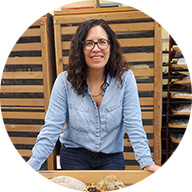People, Plants, and the Law Conference
About the event
People engage with and relate to plants in diverse and sometimes divergent ways. Seeds—and the plants that they produce—may be receptacles of memory, sacred forms of sustenance, or sites of resistance in struggles over food sovereignty. Simultaneously, they may be repositories of gene sequences or Indigenous knowledge, bulk commodities, or key components of economic development projects and food security programs. This conference will explore the special role of the law in shaping these different engagements, whether in farmers’ fields, scientific laboratories, international markets, or elsewhere.
Progam
View the conference program below.
Presentations
The Plant Treaty: Rethinking the Scope and Role of the Multilateral System, Annex 1 and Standard Material Transfer Agreement
Speaker: Dr Kamalesh Adhikari
In the wake of the enactment of the International Plant Treaty in 2004, an enabling environment of access to plant genetic resources was promised. Researchers, scientists, plant breeders, farmers and Indigenous people were assured of the benefits that would accrue through the Multilateral System of Access and Benefit Sharing. Within this system, benefits were claimed to be flowing through the exchange of the samples of 64 plant species that have been listed in the Treaty’s Annex 1. Presumptions were made that plant providers and users all over the world would increasingly use the Standard Material Transfer Agreement to exchange plants and that benefits would flow to an International Fund created by the Plant Treaty. This talk will provide a critical assessment of the Plant Treaty, suggesting why there is a dire need to rethink the scope and role of the Multilateral System, Annex 1 and Standard Material Transfer Agreement.
Sowing Seed Sovereignty: collaboration, representation and transparency in heirloom seed stewardship
Speaker: Alexandra Zamecnik
Native Seeds/SEARCH (NS/S) is a seed conservation non-profit and seed bank dedicated to collecting and conserving regional, heirloom and Indigenous seeds. Recently, NS/S developed a policy for the stewardship of these seeds that honours the voices of the communities with historical and cultural ties to them. It transitioned its leadership structure to one that is representative and changed its organizational bylaws to institutionalize these changes. The presentation will talk about this process and the importance of community representation, engagement, and consultation in seed conservation.
Efficiently and effectively regulating Digital Sequence Information (DSI): Is it possible?
Speaker: Charles Lawson
Regulation of sharing benefits from using Digital Sequence Information (DSI) under various international agreements raises questions about how this might best be achieved to deliver actual money benefits. The specific regulation requires the problem to be identified and then addressed in the most efficient and effective way. For information this is problematic because information per se is not a suitable legal object. The solution is a proxy for information. Although the more pressing problem is then who gets the money, and this is framed by the international community in terms of the Sustainable Development Goals (SDGs). The presentation concludes that regulating DSI will not deliver the quantum of benefits necessary to address the SDGs without crippling science and research funding, and that what is required is rethinking how the benefits of science within the existing free market systems can better contribute to conservation, equitable and “just” research and commercialisation.
Japan's First Plant Patents: Bioprospecting, Breeding, Biotechnology
Speaker: Kjell Ericson
This presentation's jumping-off point is the 1985 issuance of the first two plant patents ever granted by Japan's Patent Office. The patents covered a pair of polyploid Artemisia plants bred by the Kyoto-based Japanese pharmaceutical company Nippon Shin'yaku to contain higher-than-usual amounts of santonin, a plant-derived substance once common in the manufacture of anti-parasite medications. To supporters and detractors alike, the patents appeared to converge with wider 1980s trends, notably in the United States, toward a broadened range of monopoly ownership claims on organisms large and small. I argue that the situation was more complex than convergence alone. This talk highlights three intersecting historical strands that surrounded Japan's first plant patents. The first, bioprospecting, connects the polyploid Artemisia plants to a longer but less visible Eurasian history of germplasm collection and reappropriation that supported subsequent attempts to patent them. The second, breeding, examines how companies like Nippon Shin'yaku worked in conjunction with and in parallel to publicly-funded Japanese agricultural research before and after 1945, especially with regard to genetic studies of polyploidy. The third, biotechnology, shows how the company's patent applications became a touchstone of inter-ministerial conflict and media debate about re-engineering and owning organisms in 1980s Japan. Following the polyploid Artemisia plants and their patents, in short, may offer one way to explore multi-scalar global histories of plants and the law.
Biotrade, Plants and Patents in the Pacific
Speaker: Daniel Robinson
Drawing on fieldwork throughout the Pacific, patent landscaping and ‘access and benefit-sharing’ (ABS) work with governments, this paper explores patent trends relating to plants and traditional knowledge in the Pacific. There are many plants used traditionally with considerable R&D and patent activity occurring. Many of these plants are found across the region and also in Southeast Asia and/or Australasia, and the traditional knowledge associated with their uses varies also across these regions. Many of the Pacific countries have relatively new permit and ABS systems and are receiving applications from researchers. But the paper highlights that there are also considerable gaps in this system such as through regular biotrade transactions which might be ABS-relevant. The paper uses a few species as examples and highlights the need for regional collaboration in the Pacific.
Queensland Herbarium – what is it and what does it have to do with the law?
Speaker: Gillian Brown
The Queensland Herbarium is the oldest scientific institution in Queensland, dating back to 1855. We document plants through space and time, and add around 10,000 specimens to our collection each year. The practice of collecting, preserving and documenting plants has not changed drastically since herbaria began over 450 years ago, however, the management and use of collections has. Today, herbarium specimens are not just used for naming and classifying plants; they tell stories about the past (environment and people), can be used to predict the future, are a key resource for the non-commercial botanical research sector, and also support state legislation. As well as underpinning legislation, we need to comply with state, national and international laws. This includes the Nagoya Protocol, even though Australia is not yet a party to it.
‘Walking together’: Negotiating knowledge in collaborative research
Speakers: Mavis Kerinaiua and Alana Brekelmans
In this presentation, we discuss our work in developing ‘the turtuni framework’, a local tool guiding transdisciplinary and cross-cultural work with Tiwi Murrukupuni (Country). The turtuni framework draws together important cultural concepts, bringing them to the forefront in decision-making and knowledge-sharing situations so that Tiwi people and stakeholders can ‘walk together’ in a manner that centres Tiwi relational ontologies. We will describe our Indigenous-led collaborative methodology for developing the turtuni framework. We then reflect on how the Turtuni framework can guide Ngapanimarri (coming together to learn) in collaborative research that seeks to unite Tiwi Traditional Ecological Knowledge and Scientific methodologies. We describe an instance where Tiwi Traditional Owners and ecologists drew on the turtuni protocol to negotiate ontological and epistemic differences in vegetation mapping and classification of plant names. From here, we consider what using the turtuni framework to walk together through different ways of knowing might mean for Ngapanimarri and the production of new forms of plant knowledge.
Audit (Agri)Cultures: Plants, Properties, and Technoscientific Practices in Australian Agriculture
Speaker: Susannah Chapman
Over the past three decades, small changes in the management of intellectual property in plants have led to sweeping changes in the management of agricultural production in Australia. Rooted in the neo-liberalization of public plant breeding in the late twentieth century, this shift constituted a change from the collection of royalties on the sale of seeds and young trees to the collection of royalties on the sale of the harvested crop. While this significantly increased the money that could be made on certain types of crops, like self-pollinating wheat and long-lived plants like fruit trees, it also raised a host of new issues for plant owners. For wheat, plant owners now need to be able to trace and audit tiny—sometimes indistinguishable—seeds as they leave farmers’ fields. For fruit, plant owners now have a keen interest in both creating fruit markets and in raising fruits that meet those markets’ standards. As plant owners have grown more concerned about the form and movement of harvested materials, they have developed new methods for tracking and managing “plant property” and its human interlocutors, as plants move from breeding station, to farm, to market. This paper explores some of the shifts in governance, technoscientific management, and agrarian relations that have followed in the wake of new royalty arrangements.
About the presenters
 Alexandra Zamecnik
Alexandra Zamecnik
Executive Director, Native Seeds/SEARCH
Sowing Seed Sovereignty: collaboration, representation and transparency in heirloom seed stewardship
Alexandra Zamecnik is the Executive Director of Native Seeds/SEARCH. She has more than 20 years of leadership and management experience working on biodiversity conservation and natural resources management with extensive experience in Latin America. She is dedicated to promoting diversity and inclusion and has developed several programs for the inclusion and professional development of women of color, including a program for female wildland firefighters from Latin America. Through her experiences with different organizations, including the U.S. Forest Service, and as a facilitator, she has successfully formed partnerships with multilateral organizations, federal and state governments, NGOs, local communities and academia to promote local conservation outcomes. Her passion for conservation was borne out of growing up between two cultures with a mother from Argentina and a father from Boston. Since she was a child, she has returned to a ranching community in Cordoba, Argentina and has witnessed how land-use, land ownership and stewardship, and cultural practices are easily lost if they are not actively conserved. She has a B.A. in International Relations from Boston University and an M.A. focused in International Environment and Resource Policy from the Fletcher School of Law and Diplomacy at Tufts University.
Gillian Brown 
Director, Queensland Department of Environment and Science
Queensland Herbarium – what is it and what does it have to do with the law?
Dr Gill Brown is the Director of the Queensland Herbarium and Biodiversity Science business unit in the Department of Environment and Science. She has over 20 years’ experience in botanical research, teaching and collections management. Gill has a PhD in plant systematics from the University of Melbourne and the Australian National Herbarium in Canberra. She has worked the National Herbarium of Victoria and the University of Melbourne Herbarium, and visited herbaria around the world.
Mavis Kerinaiua 
Indigenous Researcher, Charles Darwin University
‘Walking together’: Negotiating knowledge in collaborative research
Mavis Kerinaiua is an Indigenous Researcher with Tiwi Resources and Charles Darwin University with over 20 years experience as a Tiwi Interpreter, translator, and researcher. Throughout her career, she has devoted herself to work on Tiwi childcare, health, housing, history, and sustainability and has represented Tiwi People at various events around Australia to discuss Climate Change Adaptation. She is currently studying for a Diploma of Indigenous Research at Charles Darwin University.
Alana Brekelmans
Research Fellow, UQ; Adjunct Fellow, Charles Darwin University
‘Walking together’: Negotiating knowledge in collaborative research
Alana Brekelmans is a postdoctoral research fellow at the university of Queensland and Adjunct Fellow at Charles Darwin University. Alana employs ethnographic, creative, and collaborative methodologies to explore relationships between affect, environment, and narrative in Australia. She was the recipient of the 2021 Australian Anthropological Society Thesis Prize for her PhD thesis.
Daniel Robinson 
Professor, University of New South Wales
Biotrade, Plants and Patents in the Pacific
Professor Daniel Robinson is the convenor of the Environment and Society Group in the Faculty of Arts at the University of New South Wales. Daniel is the Academic Co-Lead for the Pacific, for the UNSW Institute for Global Development, a university-wide strategic initiative. Until 2022 he was the Pacific Regional Manager of the Access and Benefit-Sharing Capacity Development Initiative, which ran a 6 year project implementing the Nagoya Protocol in the Pacific from 2017 to 2022. Daniel is Chief Investigator with Dr Margaret Raven on the 6 year Australian Research Council (ARC) Discovery Project: Indigenous knowledge futures: protecting and promoting indigenous knowledge (2018-2024). He has 5 books and more than 60 papers on topics such as ‘access and benefit-sharing’, biopiracy and traditional knowledge.
 Charles Lawson
Charles Lawson
Griffith Law School, Griffith University
Efficiently and effectively regulating Digital Sequence Information (DSI): Is it possible?
Charles Lawson is a part of the Griffith Law School, Griffith University. He studied science and law at The Australian National University (ANU) and holds a Bachelor of Science with Honours in biochemistry and genetics and a Bachelor of Laws. He also holds a Doctor of Philosophy from the ANU's Research School of Biological Sciences in molecular biology and biochemistry and a Master of Laws from Queensland University of Technology for research into gene patenting and competition. Before joining the university sector, he worked as a lawyer in both the private and public sectors, including at the Australian Government Solicitor and the Commonwealth Department of Finance and Deregulation. His research focus is on biology law and public administration law.
 Kamalesh Adhikari
Kamalesh Adhikari
Research Fellow, The University of Queensland
The Plant Treaty: Rethinking the Scope and Role of the Multilateral System, Annex 1 and Standard Material Transfer Agreement
Dr Kamalesh Adhikari is a Research Fellow with the ARC Industrial Transformation Training Centre for Uniquely Australian Foods and an Associate Research Fellow with the ARC Centre of Excellence for Plant Success in Nature and Agriculture at The University of Queensland. His current research focuses on socio-legal issues and concerns associated with the collection, use, and circulation of native and Indigenous plants, including traditional knowledge. Dr Adhikari is also undertaking a critical account of the concept of farmers’ rights in intellectual property law.
 Kjell Ericson
Kjell Ericson
Kyoto University
Japan's First Plant Patents: Bioprospecting, Breeding, Biotechnology
Kjell Ericson is a Program-Specific Senior Lecturer at Kyoto University's Center for the Promotion of Interdisciplinary Education and Research and teaches history in the Kyoto-Heidelberg Joint Degree in Transcultural Studies (JDTS) Program. His research interests are in histories of environment, technology, and law, in and around the Japanese archipelago. An in-progress monograph project examines Japan's southern Mie Prefecture, a region that was once the global center of saltwater pearl cultivation. His publications include contributions to multiple edited volumes and research articles in Technology and Culture, Zinbun, and the Journal of the History of Biology.
Susannah Chapman 
Research Fellow, The University of Queensland
Audit (Agri)Cultures: Plants, Properties, and Technoscientific Practices in Australian Agriculture
Susannah Chapman is a Research Fellow in the School of Social Science at The University of Queensland. Her research explores the intersection of law, science, and society, with a particular focus on transformations agricultural development and the regulation of plant materials during the twentieth century. Using ethnographic and archival methods, her work asks questions about the coloniality, biopolitics, and translational practices of contemporary efforts to regulate plant reproductive material and crop diversity.
About People, Plants and the Law Online Lecture Series
The People, Plants, and the Law lecture series explores the legal and lively entanglements of human and botanical worlds.
Today people engage with and relate to plants in diverse and sometimes divergent ways. Seeds—and the plants that they produce—may be receptacles of memory, sacred forms of sustenance, or sites of resistance in struggles over food sovereignty. Simultaneously, they may be repositories of gene sequences, Indigenous knowledge, bulk commodities, or key components of economic development projects and food security programs.
This lecture series explores the special role of the law in shaping these different engagements, whether in farmers’ fields, scientific laboratories, international markets, or elsewhere.
Note that all dates and times displayed are in Australian Eastern Standard Time (AEST).



